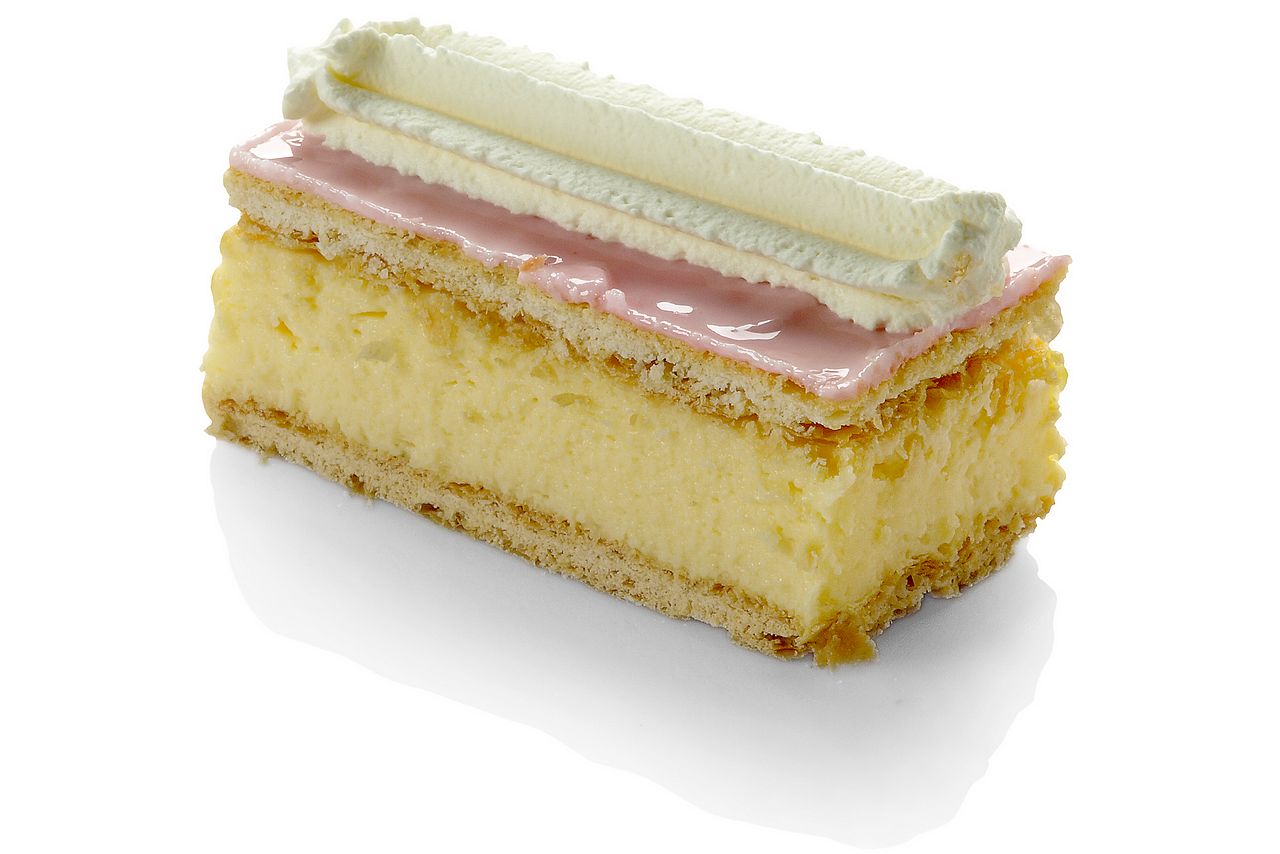
Tompouce, an iconic pastry that has tantalized taste buds for centuries, takes center stage in this captivating exploration. From its humble beginnings to its remarkable evolution, we delve into the rich tapestry of flavors, textures, and cultural significance that define this delectable treat.
Prepare to be immersed in a world of culinary artistry as we unveil the secrets behind tompouce’s exquisite composition and intricate preparation. Its layered structure, vibrant colors, and indulgent fillings have made it a beloved symbol of culinary excellence.
History and Origin: Tompouce
The tompouce, a delectable pastry with Dutch origins, has a rich history dating back to the 18th century. Its origins can be traced to the city of Haarlem, where it was initially known as the “tompoes”. The name is believed to have derived from the Dutch word “tompe”, meaning “to beat” or “to hit”, possibly referring to the vigorous kneading process involved in preparing the dough.
Over time, the tompouce gained popularity and spread throughout the Netherlands and beyond. It became a beloved treat, often associated with celebrations and festive occasions. Regional variations emerged, with different cities and towns developing their own unique interpretations of the pastry.
Ingredients and Composition, Tompouce
A traditional tompouce consists of several layers of puff pastry, filled with a creamy custard or whipped cream, and topped with a layer of pink fondant icing. The puff pastry is made from a combination of flour, butter, water, and salt.
The custard filling is typically made with milk, sugar, eggs, and vanilla extract.
The ingredients used in a tompouce play a crucial role in creating its distinctive flavor and texture. The puff pastry provides a flaky and buttery base, while the custard filling adds a rich and creamy sweetness. The fondant icing adds a touch of color and a glossy finish.
Preparation and Techniques
Preparing a tompouce requires careful attention to detail and precision. The puff pastry is first made by laminating butter into the dough, which creates the flaky layers. The custard filling is then prepared and spread over the pastry. Finally, the tompouce is topped with the fondant icing.
Special techniques are employed to achieve the desired texture and appearance. The dough is rolled and folded several times to create the flaky layers. The custard filling is cooked slowly and stirred constantly to prevent curdling. The fondant icing is carefully spread over the pastry to create a smooth and even surface.
Variations and Regional Adaptations
The tompouce has undergone various regional adaptations over time. In Belgium, it is known as a “tompouce” and typically has a rectangular shape. In France, it is called a “mille-feuille” and often has a square or round shape. In Indonesia, it is known as a “napoleon” and is filled with a layer of jam or fruit.
These regional variations showcase the diversity and adaptability of the tompouce. Each variation has its own unique characteristics and reflects the culinary traditions of the region where it is made.
Cultural and Social Significance
The tompouce holds cultural and social significance in many countries. In the Netherlands, it is a popular treat enjoyed during celebrations such as King’s Day and Sinterklaas. In Belgium, it is often served at weddings and other special occasions.
The tompouce has become a symbol of national pride and regional identity. It is a beloved pastry that brings people together and evokes a sense of nostalgia and tradition.
Nutritional Value and Health Considerations
A tompouce is a calorie-dense pastry with a high sugar and fat content. A single tompouce can contain up to 500 calories and 25 grams of fat. It is also a source of carbohydrates and protein.
Due to its high calorie and fat content, tompouces should be consumed in moderation as part of a balanced diet. Individuals with dietary restrictions or health concerns, such as diabetes or heart disease, should consult with a healthcare professional before consuming tompouces.
Final Summary

As we conclude our journey into the world of tompouce, we are left with a profound appreciation for its timeless appeal. Its ability to transcend borders and cultures, bringing joy to countless individuals, is a testament to the enduring power of culinary traditions.
Tompouce stands as a delectable embodiment of creativity, indulgence, and the enduring spirit of gastronomy.
Expert Answers
What is the origin of tompouce?
Tompouce traces its roots back to the 18th century, originating in the Netherlands as a variation of the French mille-feuille.
What are the key ingredients in a tompouce?
Puff pastry, almond paste, custard, and a vibrant pink icing are the essential components of a classic tompouce.
How is tompouce typically served?
Tompouce is often enjoyed as an afternoon treat or as part of festive celebrations, sliced into rectangular or triangular portions.





